Notorious Mobsters at Home: 21 Photos of Domestic Mob Life
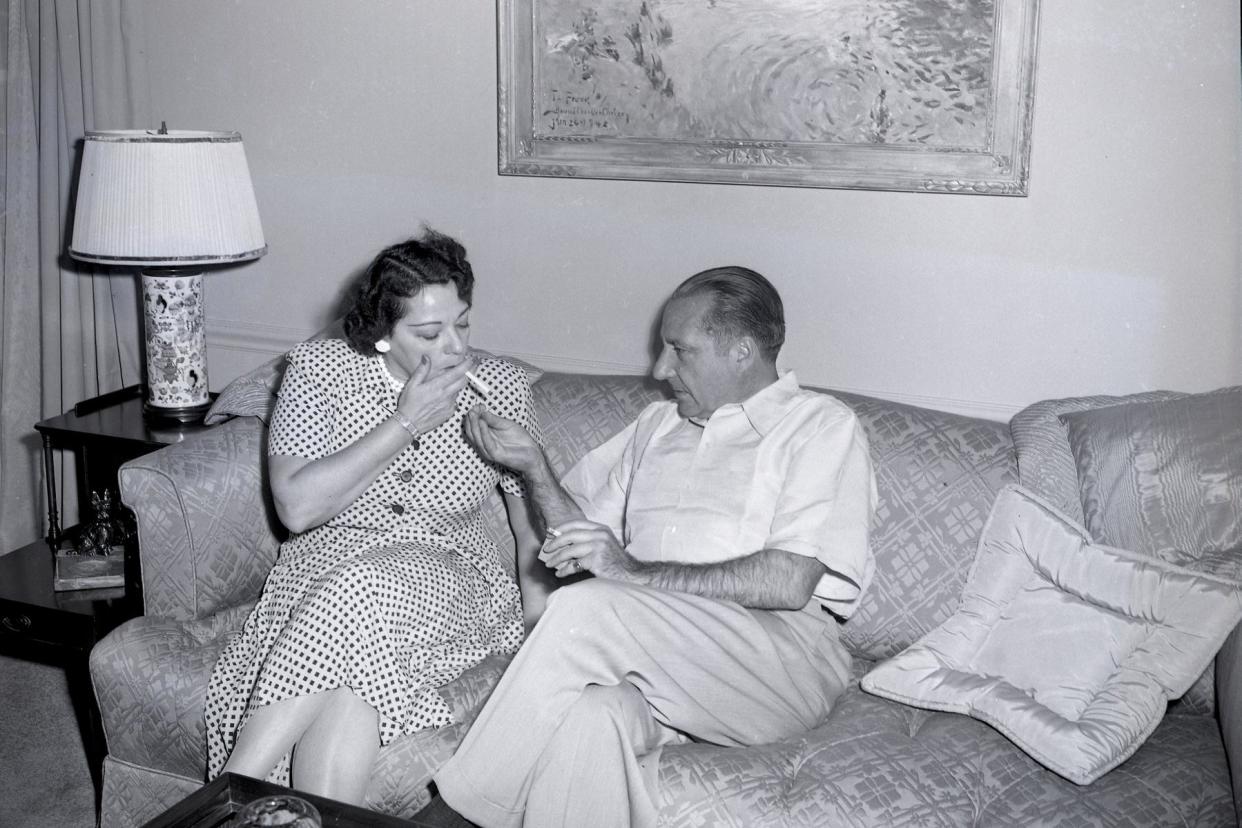
Photo: Edna Murray/Newsday RM via Getty Images
The styles embodied by the ladies of organized crime has catapulted the “mob wife aesthetic” into the TikTok micro-trend adherent’s obsession du jour (think loud luxury: animal prints, bold colors, and a general embrace of maximalism). But while such trends cycle in and out of glory, our broader cultural fascination with the lives and crimes of infamous mafiosos seems here to stay. American film legends Martin Scorsese and Francis Ford Coppola have mined the gangster world to universal acclaim, shaping the genre with films like Goodfellas, Gangs of New York, and The Godfather. Fans still flock to the New Jersey manse of fictional mafioso Tony Soprano 25 years after the seminal HBO series first premiered.
Newer entries, like Sofía Vergara’s Griselda, have proven that interest in the anti-heroes of mob and cartel boss culture endures by claiming the top spot of Netflix’s most popular programming for three straight weeks. Though the real kingpins these works draw their inspiration from spent plenty of time and energy evading police custody, they seem to have welcomed being captured at least in these photographs, which offer a bit of insight into their lifestyles away from the mean streets. Read on for a look at notorious mobsters enjoying some time at home (both enforced-stay and otherwise).
Al Capone
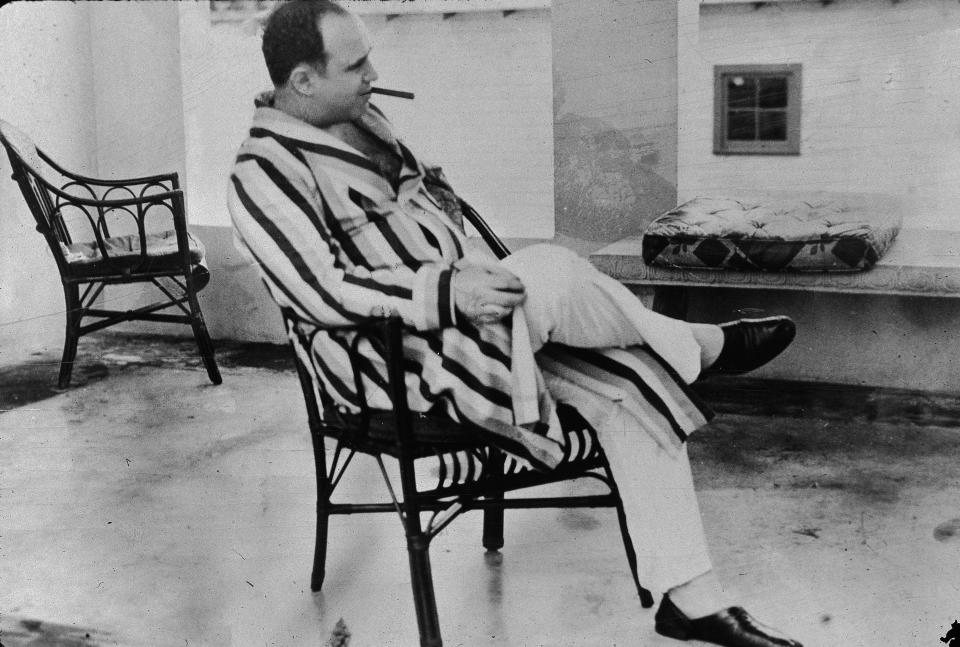
Al 'Scarface' Capone
Al “Scarface” Capone is most commonly associated with Prohibition-era Chicago, where he rose to prominence running bootlegging, prostitution, and gambling operations, but the mob boss traded in the harsh Illinois winters for a Miami Beach manse in 1928. According to PBS, the infamous gangster told his new Sunshine State neighbors that he was a secondhand furniture dealer. Locals were not fooled by his assertion (as he was, by then, quite well known for his organized crime ring) and feared he would give the area a bad reputation. A few decades removed from his death, though, many were singing a different tune when the late mobster’s abode was set to be demolished in 2021; an online petition to halt the development garnered over 25,000 signatures, per Mansion Global.
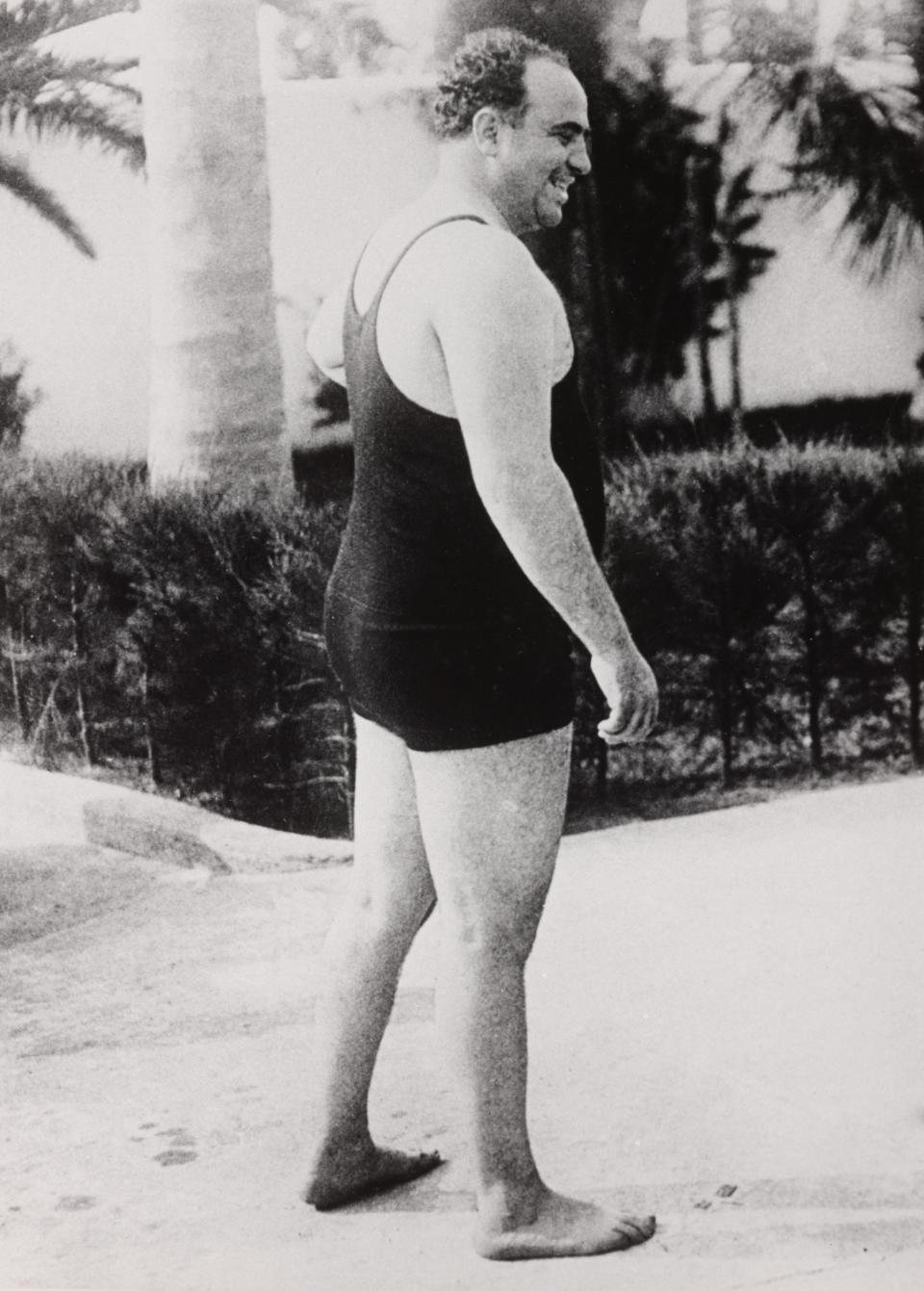
Al 'Scarface' Capone at home
“Miami Beach risks losing an important part of not just our local history, but of US history if this demolition is allowed to proceed,” organizers wrote in the petition, calling the dwelling a “landmark structure” and warning of the “long-term negative impact on the community” its destruction would bring.
Much like its former occupant, the 1922 build met a grim end (despite public outcry) when it was reduced to rubble in August 2023. The former Palm Avenue estate is where Capone died in 1947.
Frank Costello
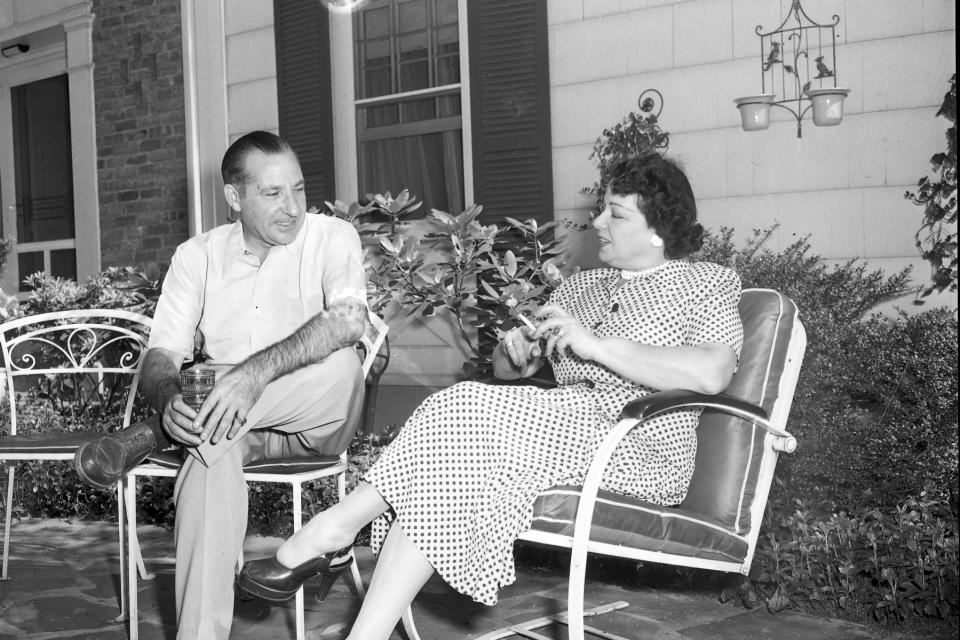
Crime figure Frank Costello and wife at home on Long Island
A different side of the Calabria-born crime boss—who was known as “the Prime Minister of the Underworld”—is revealed in Edna Murray’s photos of Costello and his wife, Loretta Geigerman, at home in Sands Point, New York. The infamous racketeer maintained a quaint estate on the North Shore of Long Island in addition to the couple’s swanky apartment on Central Park West.
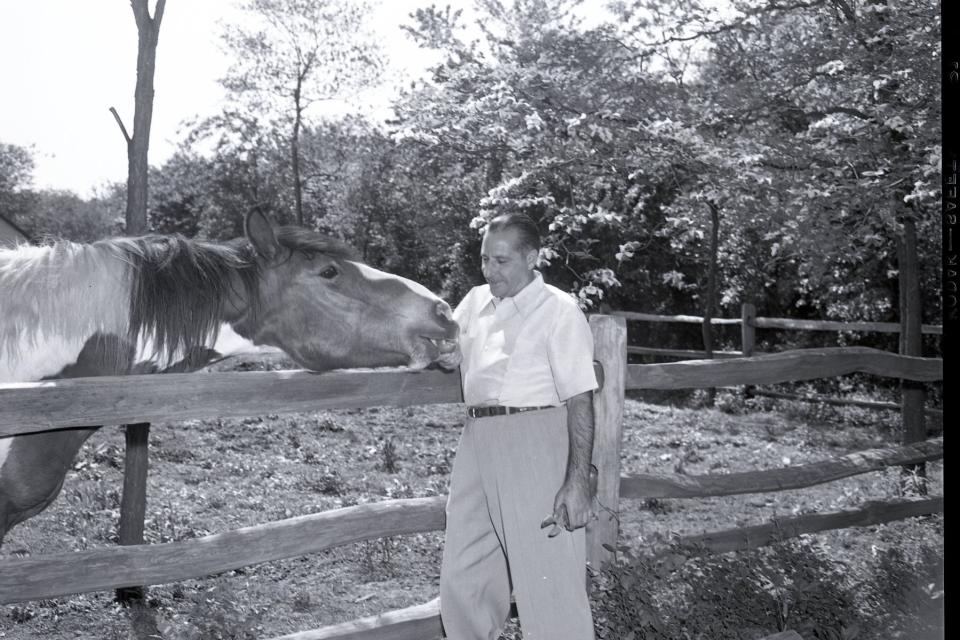
Crime figure Frank Costello with horse at his property on Long Island
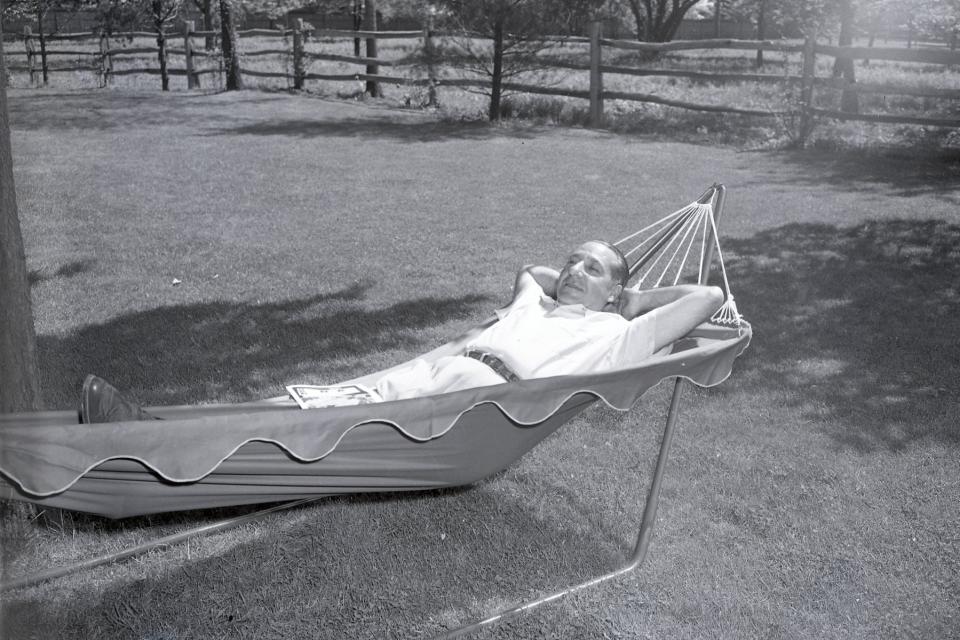
Crime figure Frank Costello lays in hammock at home on Long Island
Costello was released from prison after serving his second contempt sentence at Rikers Island in 1961. Though he had lived a colorful life, marked by various nefarious dealings, jail time, and a survived assassination attempt, it was said that gardening at his country dwelling and bringing his flowers to local shows was Costello’s greatest interest in later years.
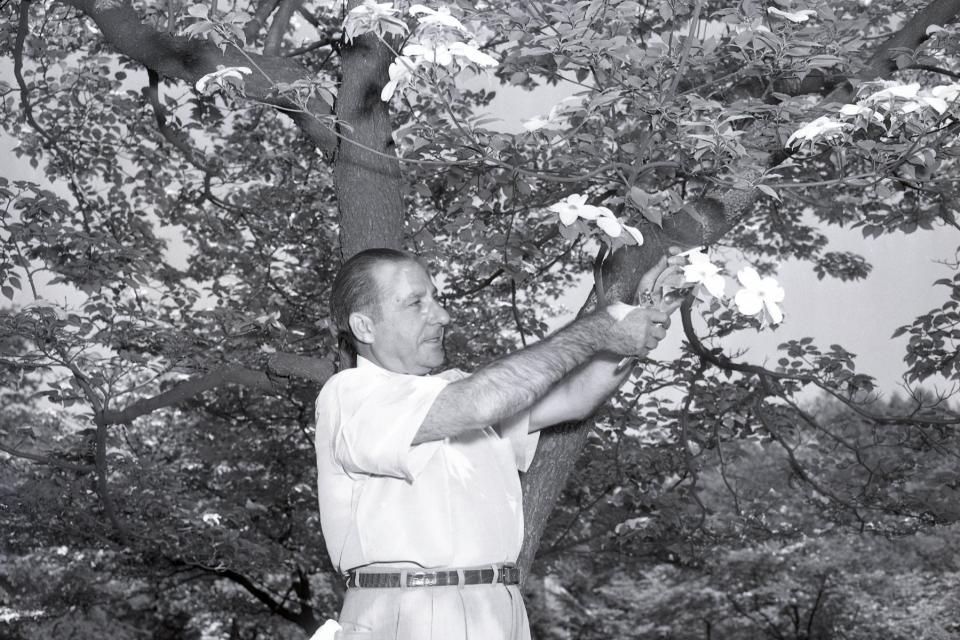
Crime figure Frank Costello prunes tree on his property
“The assassination attempt convinced him to retire from underworld activities, and he pursued his passion for gardening,” reads his 1973 New York Times obituary.
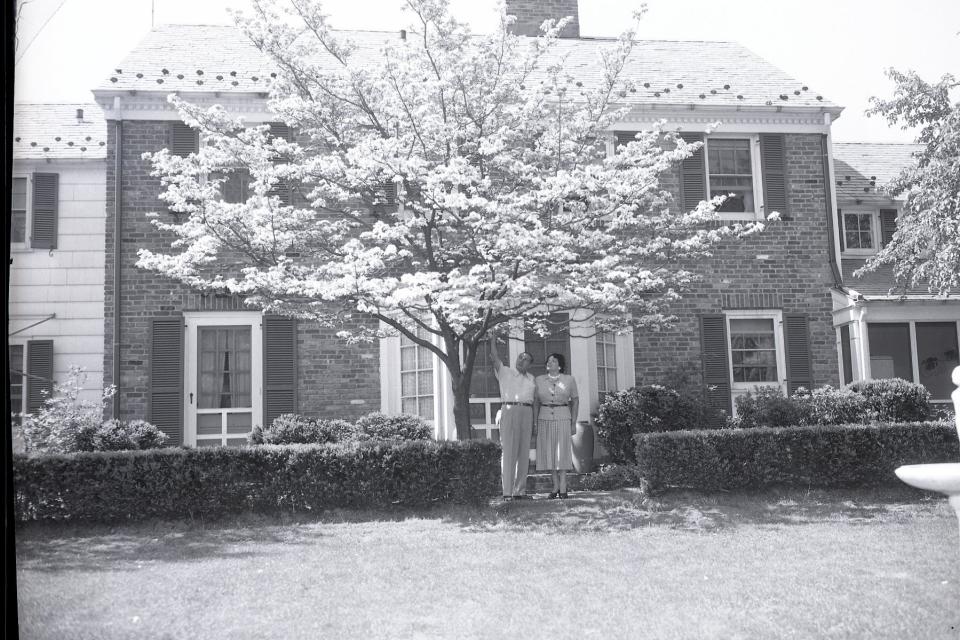
Crime figure Frank Costello and wife in front of their Long Island home
Charles “Lucky” Luciano
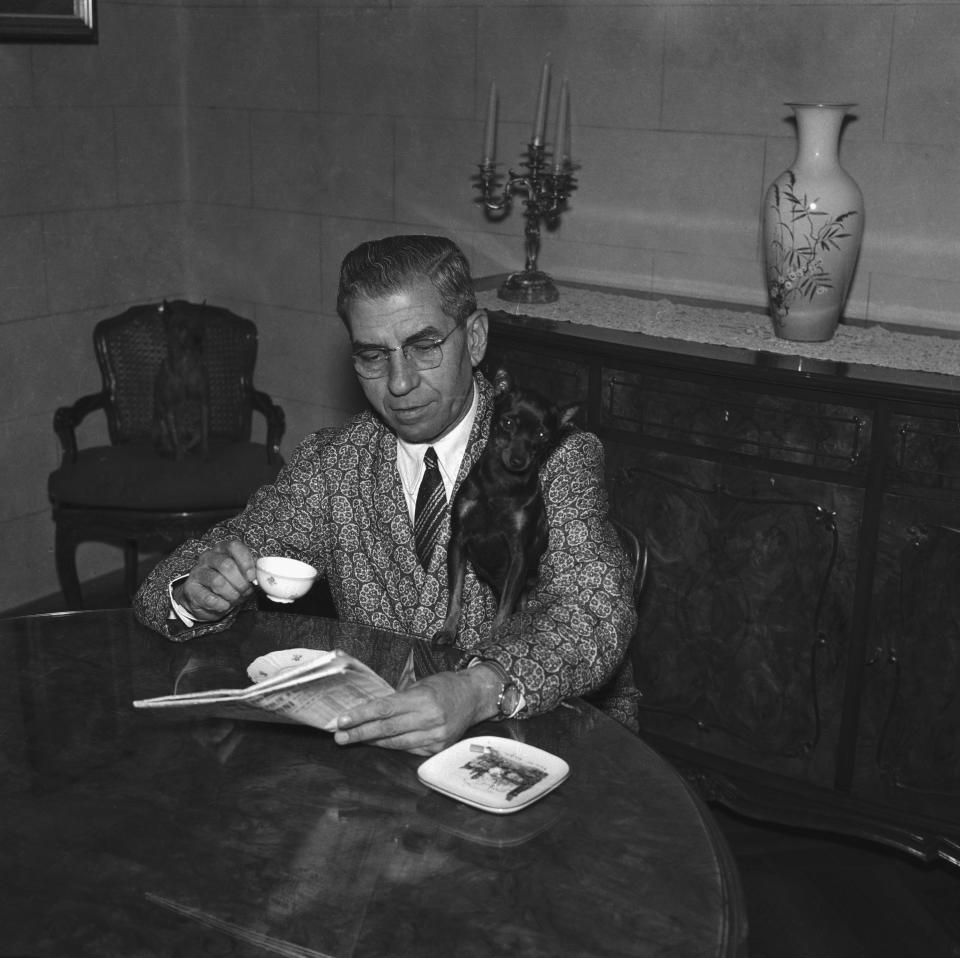
Lucky Luciano Reading with Pet Dog on his Lap
In February 1946, Luciano was deported to his homeland, Italy. He had been serving out a sentence for pandering in New York prior to the voyage from Brooklyn Harbor to Naples, a 17-day journey by ship. He maintained an abode in the Southern Italy locale with his partner Igea Lissoni, a ballerina whom he met a short time after returning to the peninsula.
Because of his long rap sheet, Luciano was surveilled closely by officials in Italy. He was required by law to spend nights at home for several years. He suffered a fatal heart attack in 1962 at Naples International Airport, where he had plans to meet a producer to discuss a film about his life.
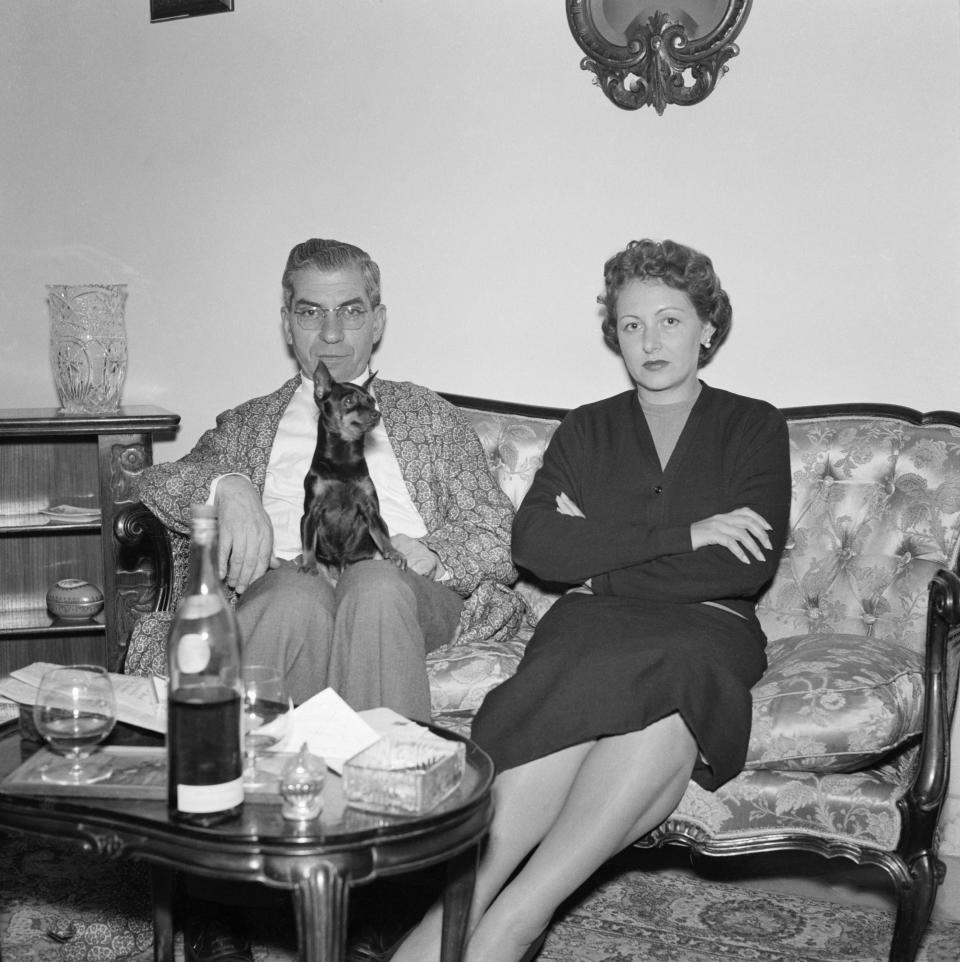
Charles Luciano at Home with Wife and Dog
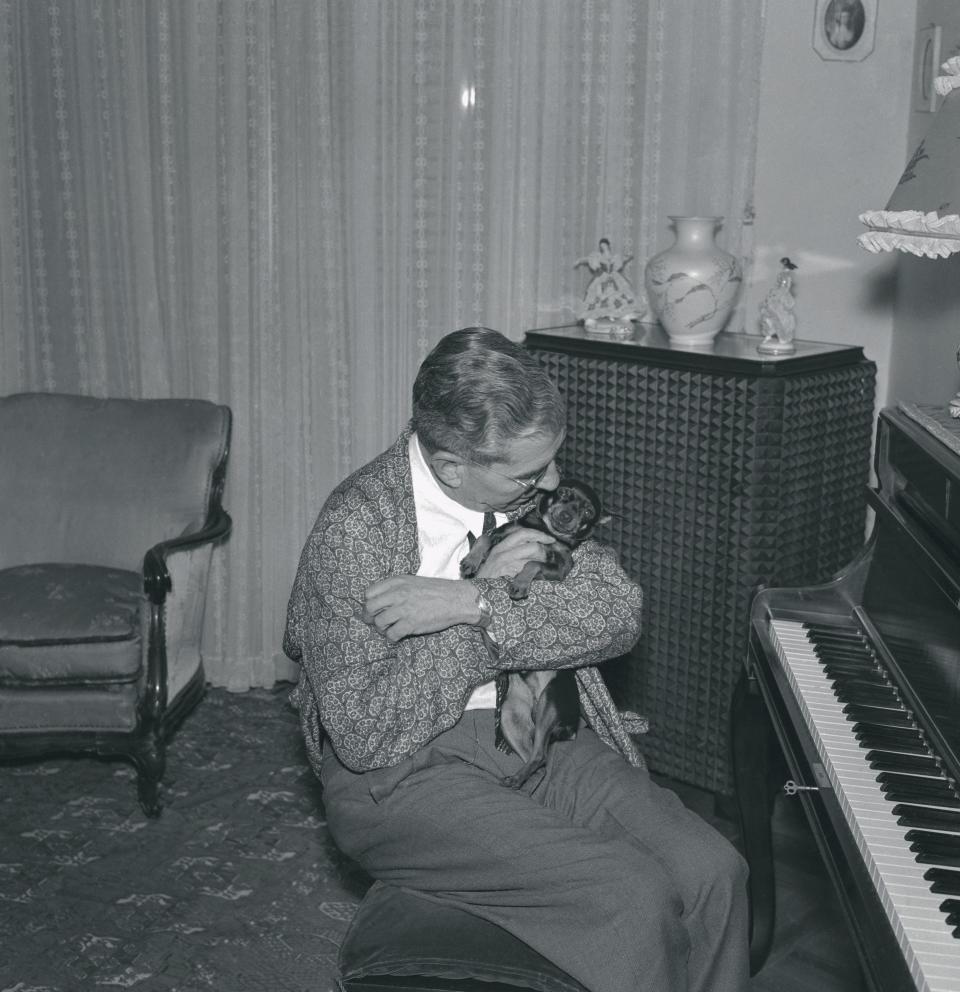
Lucky Luciano Embracing Miniature Doberman Pinscher
The Kray twins
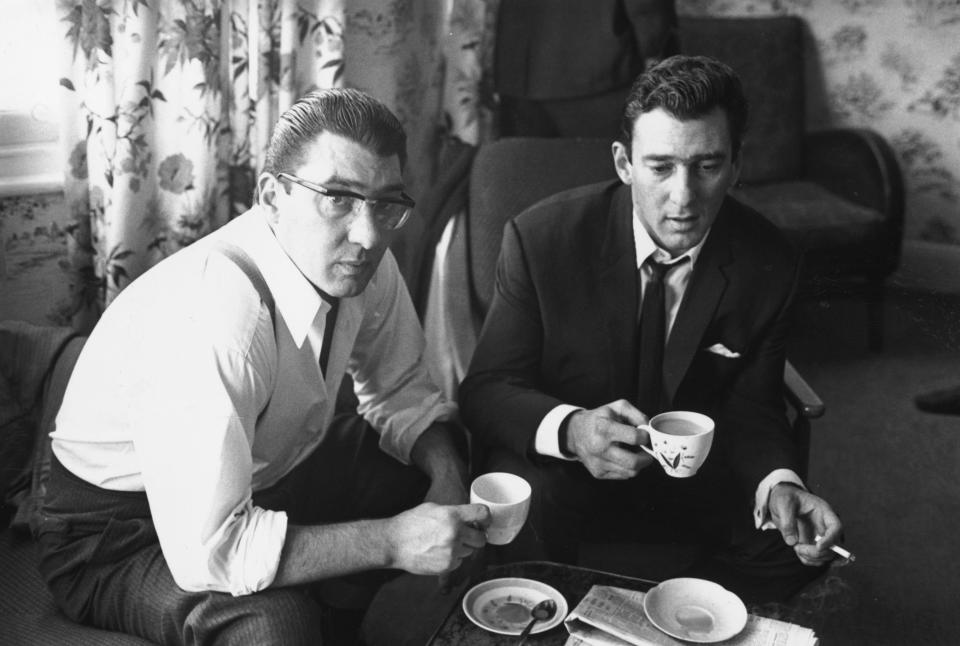
Kray Tea
The identical twins became some of the most well-known figures in English organized crime during their reign, which lasted from the 1950s until their life imprisonment sentence was handed down in 1968. When Ronald and Reginald Kray were around five years old—years before they were convicted of four murders—they moved to a residence on 178 Vallance Road in the Bethnal Green area of London.
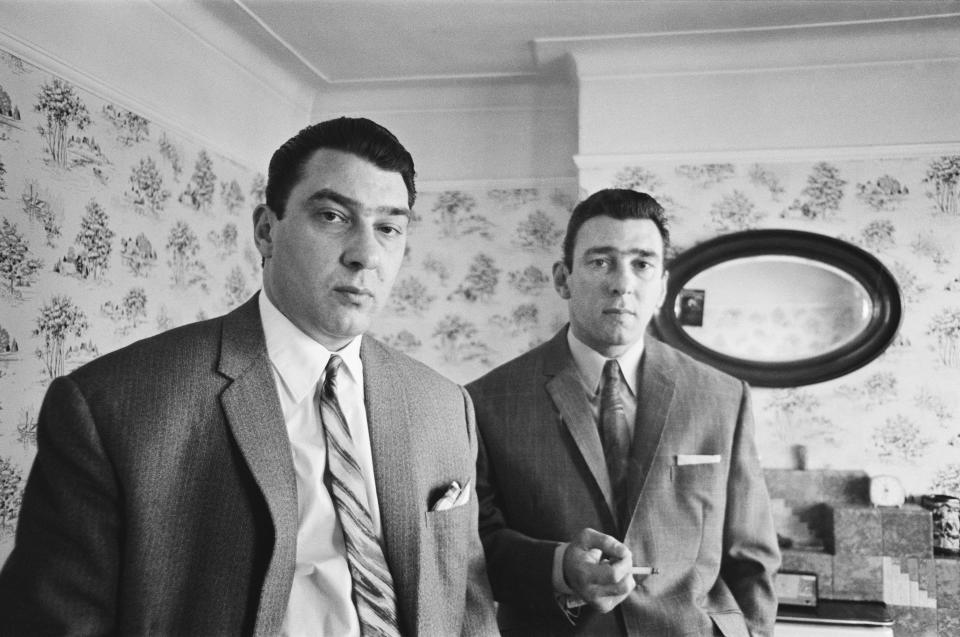
Kray twins
The Krays maintained the family home for decades, residing there throughout the bulk of their time operating with their gang, known as The Firm. Some of the gang’s meetups allegedly took place in the front room of 178 Vallance, which has since been demolished.
Jack “Spot” Comer
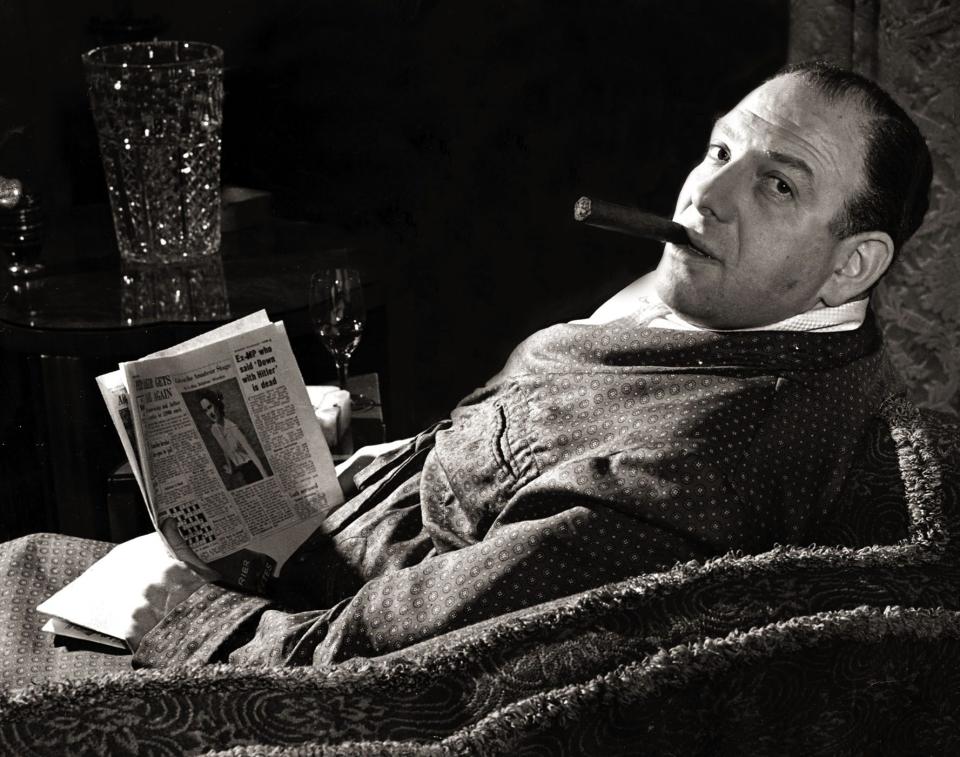
Jack Comer also known as Jack Spot Jack Comer, smoking a cigar August 1955
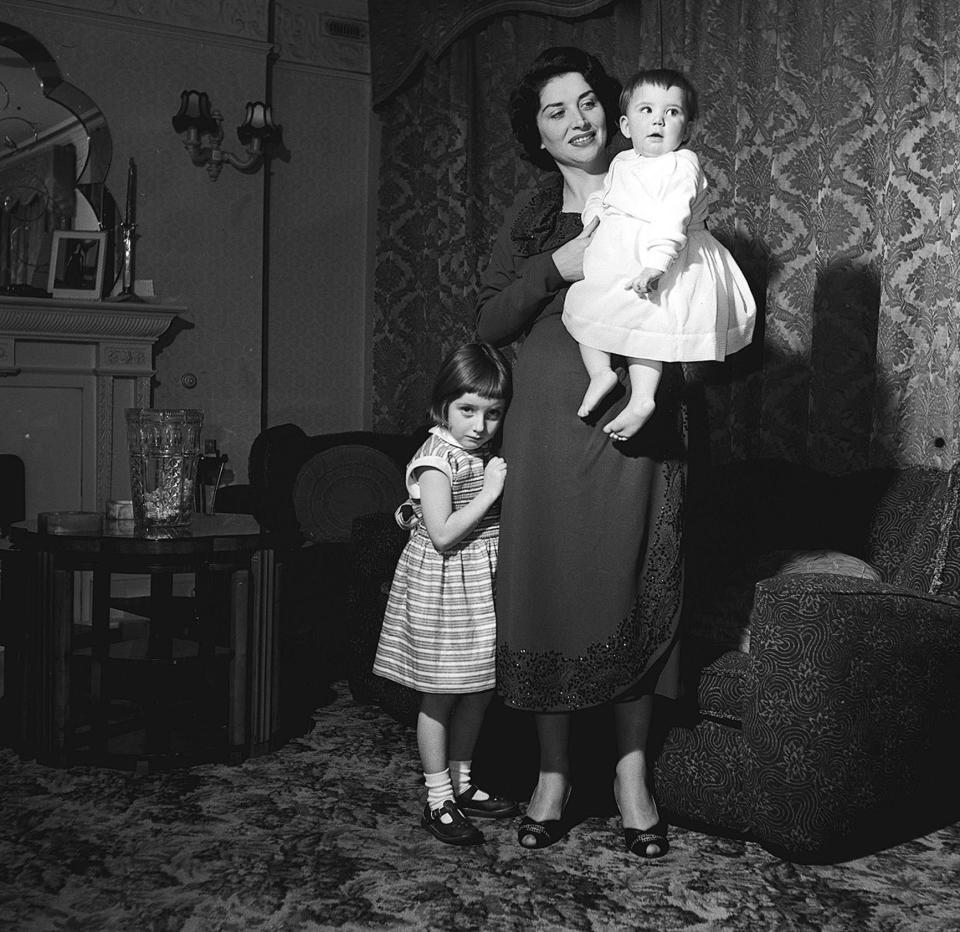
Rita Comer, wife of London gang leader Jack Comer, pictured at home with their two children December 1955
The English gangster lived with his wife, Rita, and their two daughters in a flat at London’s Hyde Park Mansions, about a half hour away from the Fieldgate Mansions in Whitechapel, where he grew up. Comer and his wife were attacked about 100 yards away from the family home by “Mad” Frankie Fraser in 1956. Comer allegedly stepped back from his life of organized crime in the years following, pursuing a number of other less dangerous paths. It’s said that one of these such jobs was as an antique furniture dealer.
Mickey Cohen
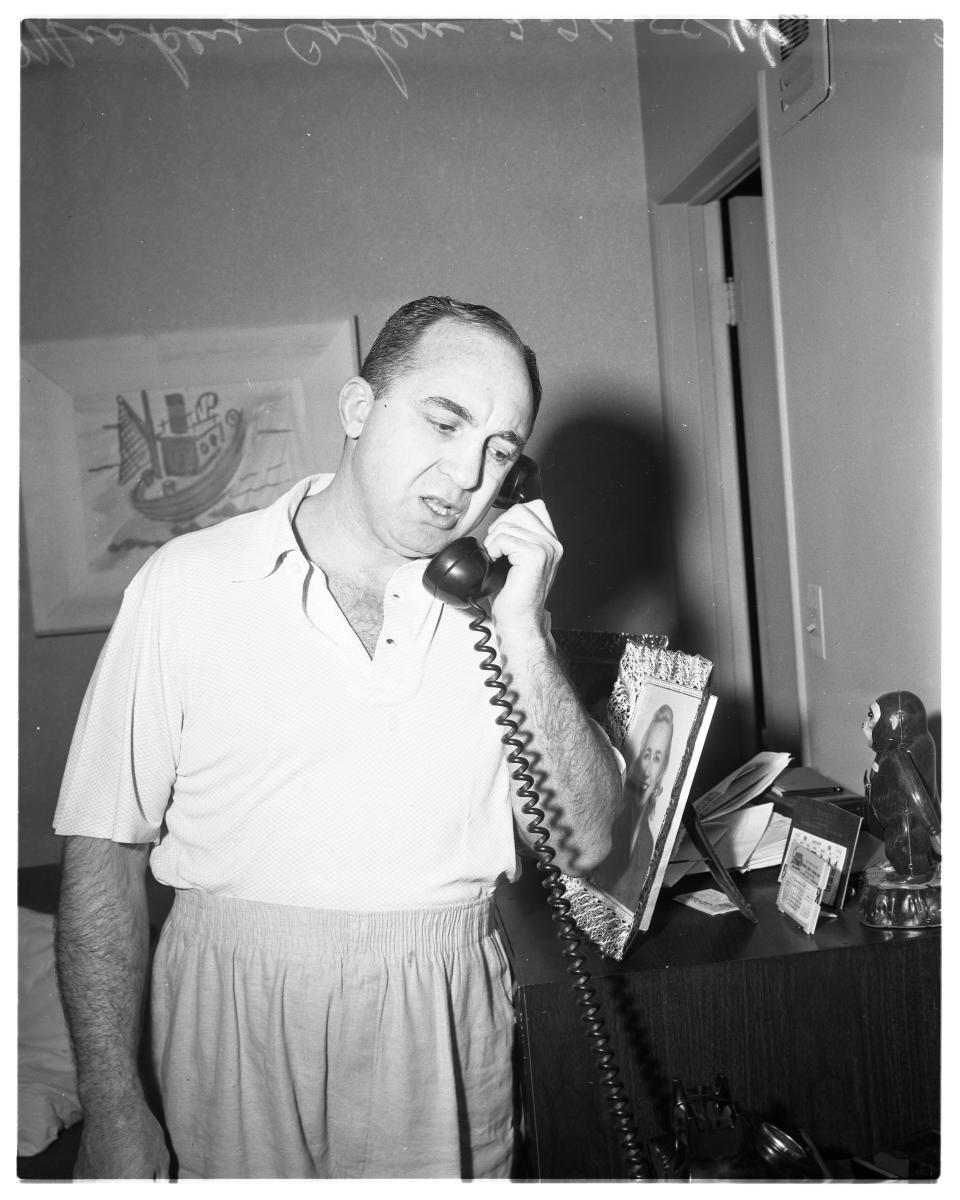
Mickey Cohen, 1958
The boxer, entrepreneur, and gangster led the Cohen crime family in the mid 1900s, operating a number of businesses both legitimate and otherwise throughout his time as boss. Born in New York, he became involved in organized crime during the Prohibition era in Chicago. Cohen relocated to the West Coast in his early 20s and worked under his mobster mentor, Bugsy Siegel.
By the 1940s, their criminal enterprises involved gambling, drug trafficking, prostitution, and labor union control, among others. In 1949, parts of Cohen’s home at 513 Moreno Drive in LA’s Brentwood neighborhood were damaged when a homemade bomb went off on the property. A $3,000 “electric eye” warning system he had installed at the abode reportedly did no good. “I thought it was a nightmare,” he told police and the papers. “The dogs didn’t even bark and the radar didn’t go off.”
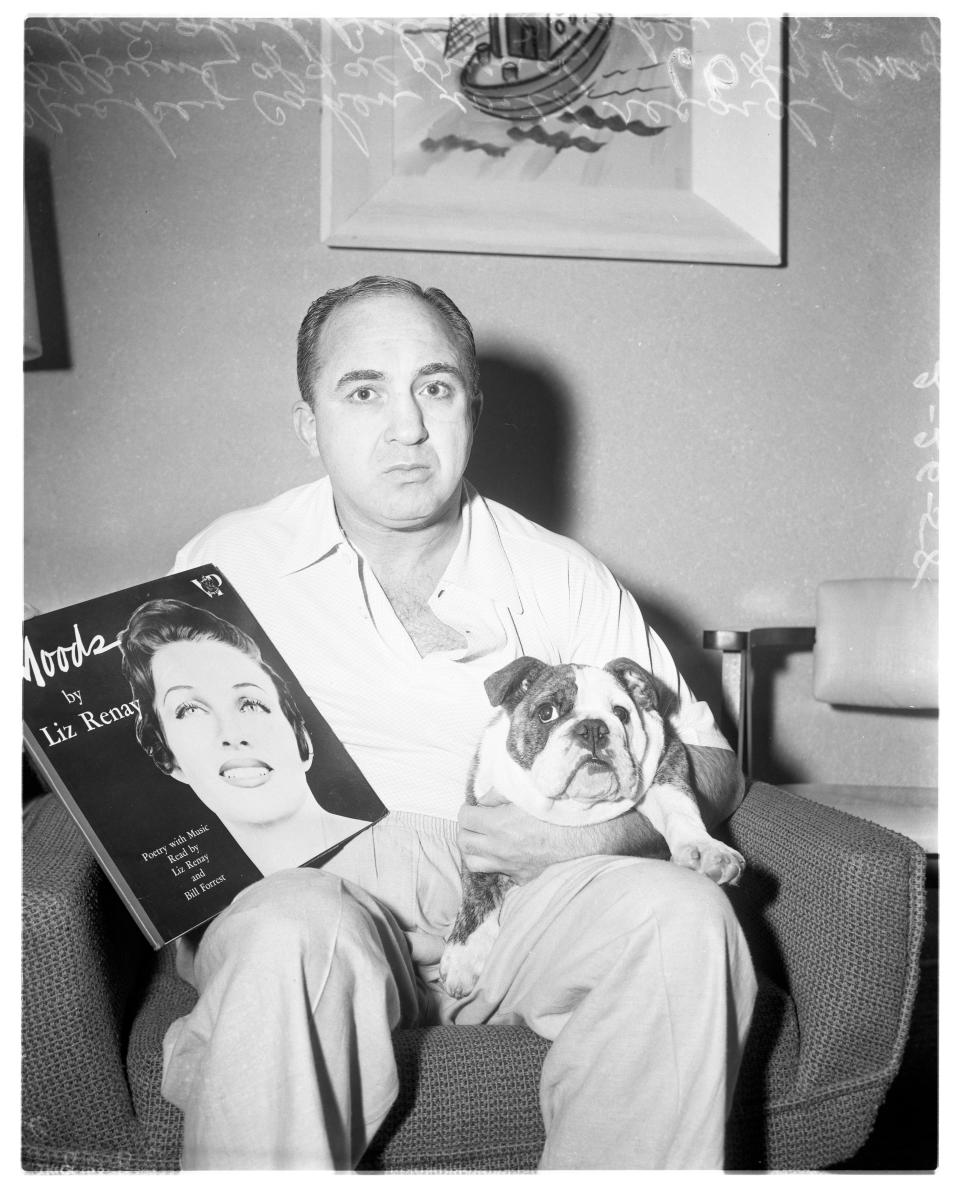
Mickey Cohen, 1958
Cohen later maintained a Brentwood apartment on South Barrington Avenue. Per records from the LA Herald Examiner, a former local newspaper, it was at this home in 1960 that Cohen was arrested by authorities on income tax charges—though he saw things differently: “They wasn’t cops, they were burglars!”
In 1961, Cohen was sent to Alcatraz, where he served several months on tax evasion charges before being transferred to a prison in Atlanta.
Arthur Thompson
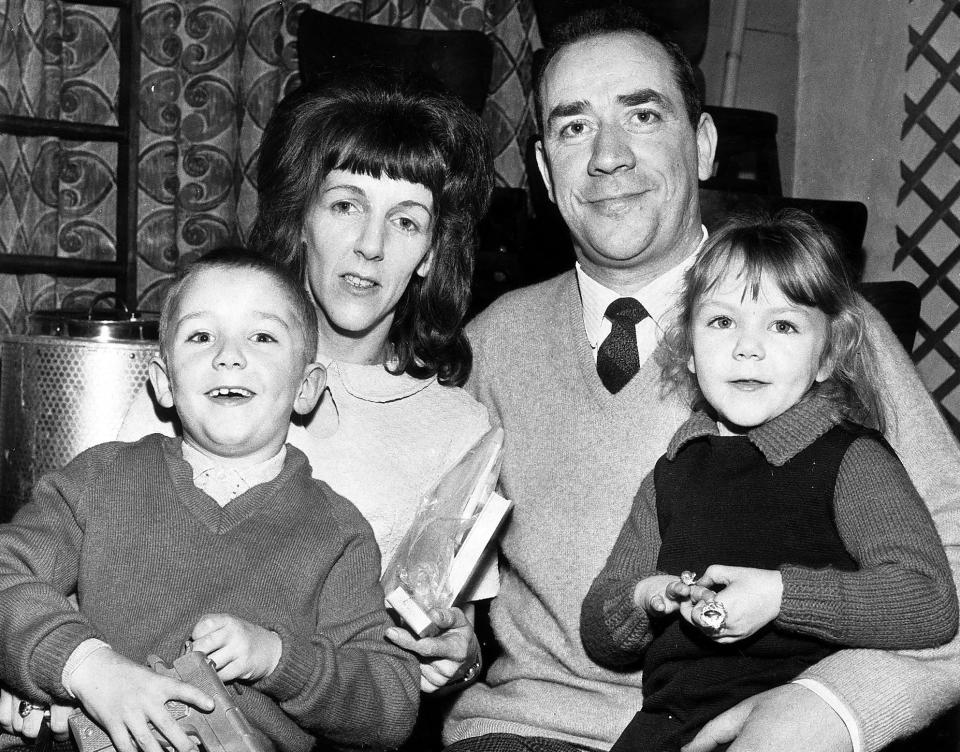
Arthur Thompson
Thompson ruled the Glasgow gangland for years, where he was a feared money lender and ran rackets for “protection” of businesses in the area, later investing the funds into legitimate enterprises. The godfather of Glasgow resided with his wife and children in Provanmill, a town northeast of the city center. Their home was named the Ponderosa, after the main characters’ family ranch from the long-running American western series, Bonanza. Legend has it that the converted counsel house was outfitted with secret passages, hiding spots, and an underground tunnel.
Albert Dimes
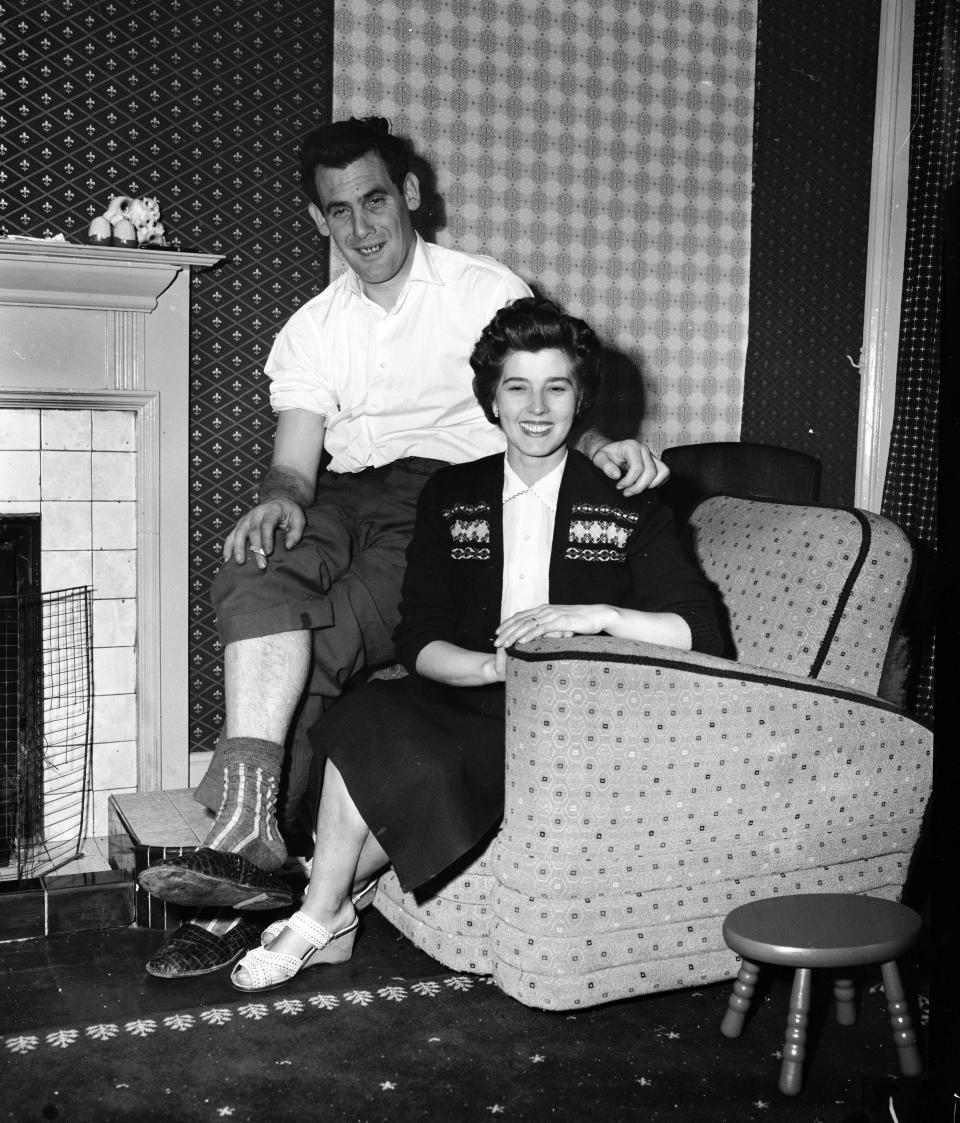
Albert Dimes
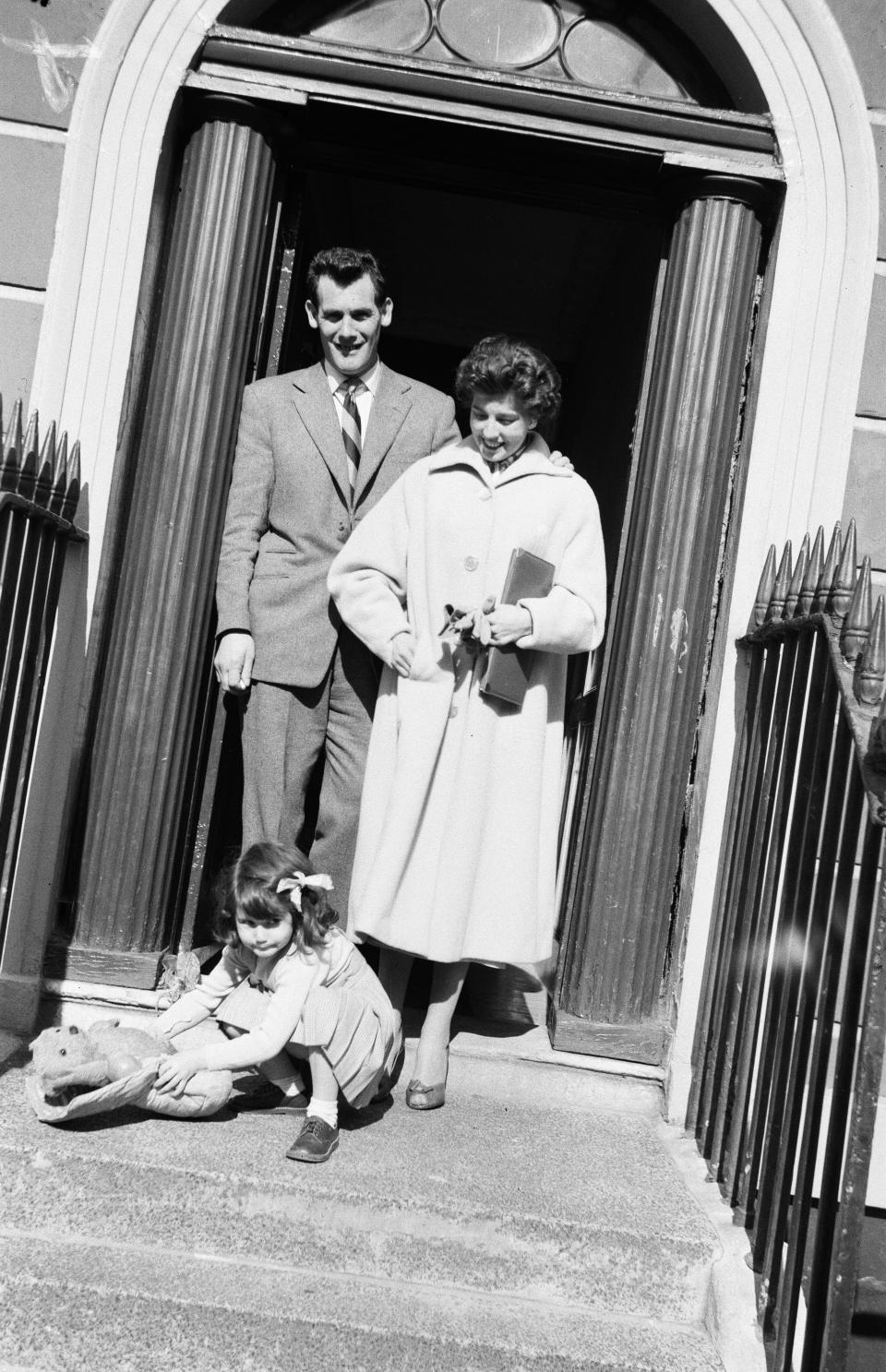
Albert Dimes
Born George Alberto Authur Dimeo in South Lanarkshire, Glasgow, Dimes resided with his family at 22 River Street in London. The Scottish Italian bookmaker and loan shark later lived in a home on Oakwood Avenue in London’s Beckenham area, where he died in 1972. A wreath from the Kray twins was sent to his funeral service, addressed “to a fine gentleman.”
Arlyne Brickman
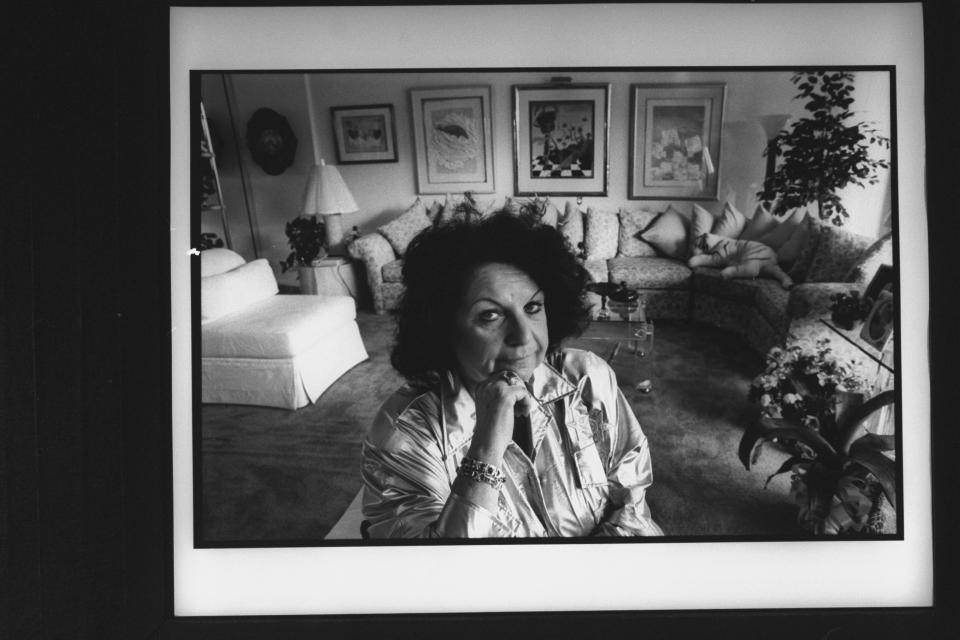
Arlyne Brickman
Growing up in New York’s Lower East Side, Brickman idolized Virginia Hill, the glamorous girlfriend of famed mob boss Bugsy Siegel. She frequented mafia-affiliated hangouts and became involved in illicit activities like loan sharking, robbery, and drug trafficking. After becoming entrenched in the city’s gangster goings-on, Brickman eventually flipped to become an FBI informant. Instead of retreating from public life or joining the Witness Protection Program, she went on to participate in a tell-all book about her mafia affiliations, numerous interviews with high-profile outlets like 60 Minutes, and even a photo shoot at her residence.
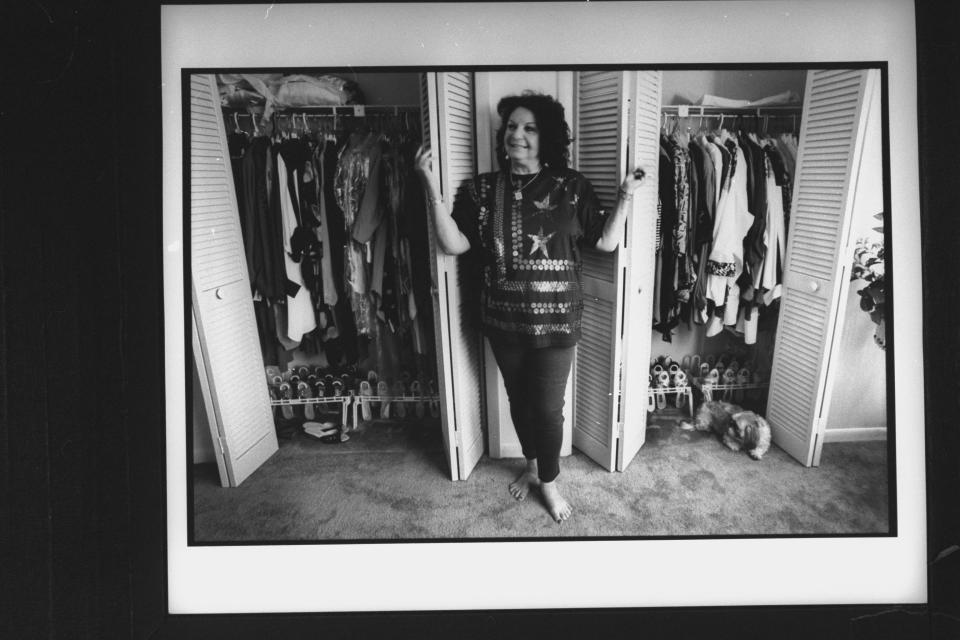
Arlyne Brickman
“I just have to worry about the wise guys,” she told the Chicago Tribune in 1992. ”But if I’m going to let myself go and start worrying if they’re going to hit me, or this or that, then I’ll fall apart, and I can’t. I’ve got to keep going.”
Originally Appeared on Architectural Digest


